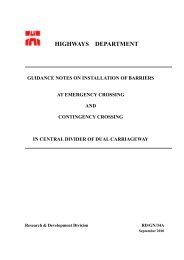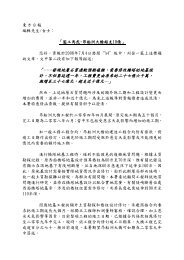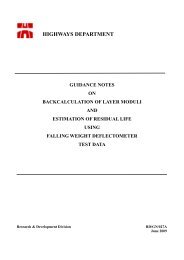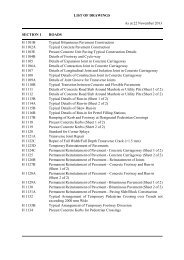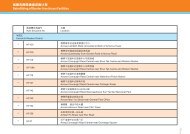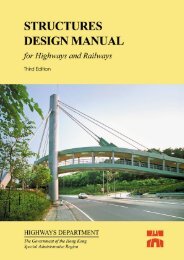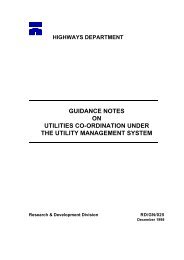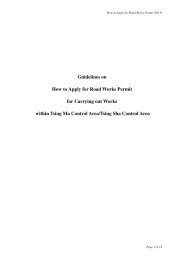Pavement Design for Carriageway Construction
Pavement Design for Carriageway Construction
Pavement Design for Carriageway Construction
You also want an ePaper? Increase the reach of your titles
YUMPU automatically turns print PDFs into web optimized ePapers that Google loves.
[axle/vehicle]= 3.16.5 Modulus of Subgrade ReactionIn the design analysis, it is assumed that the reactive pressure provided by thesub-base/subgrade material under a concrete slab is proportional to the de<strong>for</strong>mationbelow the point of loading. The ratio is known as the ‘modulus of subgrade reaction’or ‘k-value’.By using Table 7, the k-value can be estimated from the elastic modulus of thesubgrade, the thickness and modulus of elasticity of the sub-base, in which the elasticmodulus of subgrade should be assessed on-site wherever possible.Table 7 – Modulus of Subgrade Reaction (k) [in N/mm 3 or MPa/mm]E subgradeThickness of Granular Sub-base(MPa) 150 mm 225 mm 300 mm50 0.045 0.050 0.060100 0.060 0.075 0.090150 0.075 0.090 0.110200 0.085 0.105 0.125250 0.095 0.115 0.140300 0.100 0.125 0.1506.6 Properties of ConcreteGrade 40/20 concrete is specified <strong>for</strong> the construction of rigid pavements in HongKong. The following material properties are adopted in the pavement analysis <strong>for</strong>developing <strong>Design</strong> Charts 7 to 9.Modulus of rupture = 5.25 MPaModulus of elasticity = 33,000 MPaPoisson’s ratio = 0.15Temperature differential = 2.7 o C within typical slab thickness6.7 Structural <strong>Design</strong>For structural design of rigid pavements, <strong>Design</strong> Charts 7 to 9 shall be followed <strong>for</strong>slab length of 4m, 5m, and greater than or equal to 6m respectively.RD/GN/042 <strong>Pavement</strong> <strong>Design</strong> <strong>for</strong> <strong>Carriageway</strong> <strong>Construction</strong> Page 23 of 42



